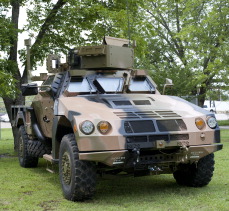SCOTT AIR FORCE BASE, Ill., Jan. 20, 2011 — Airmen supporting deployed airdrop operations in Afghanistan reached an unprecedented level in 2010 with a record 60.4 million pounds of cargo airdropped to austere locations throughout the country.
To put it another way, imagine watching 8,162 Chevy Suburbans with parachutes floating down from the sky. In all, the 60.4 million pounds is nearly twice the previous record year of 2009, when more than 32.2 million pounds of cargo were airdropped, U.S. Air Forces Central statistics show.
The increase can be attributed to the surge of an additional 30,000 troops to Afghanistan between December 2009 and August 2010. In those nine months, Air Forces Central stats show that more than 40 million pounds of cargo were airdropped. But the reason for airdrops is the same as it has been since the war started: Afghanistan’s austere environment.
Mountainous areas, remote operating locations and limited road infrastructure have made airdrops a necessity – one that has grown with more troops on the ground.
According to a Jan. 12 Defense Department news report, numbers of U.S. troops and civilians, allied trainers and combat forces, Afghan army and police trainees all increased in Afghanistan by more than 100,000 in 2010 compared to previous years. All those forces need constant resupplying to keep operations flowing.
Since 2006, the annual amount of airdropped supplies and equipment has practically doubled every year. Air Force Central statistics released yesterday show that 3.5 million pounds were airdropped in 2006, 8.12 million in 2007, 16.57 million in 2008, 32.26 million in 2009 and 60.4 million in 2010.
“These airdrops are critical to sustaining ground forces at austere locations where other means of resupply aren’t feasible,” said Air Force Col. David Almand, who served as director of the Combined Air and Space Operations Center’s Air Mobility Division in 2010. “This continued sustainment of our warfighting forces is key to counterinsurgency operations, which require persistent presence and logistics.”
The airdrops are accomplished in many ways. In March, a C‑130 Hercules made the first “low-cost, low altitude,” or LCLA, airdrop in Afghanistan. This is accomplished by dropping bundles weighing 80 to 500 pounds, with pre-packed expendable parachutes, in groups of up to four bundles per pass. The drops are termed “low-cost” to reflect the relative expense of the expendable parachutes compared to their more durable, but pricier, nylon counterparts. “Low-altitude” describes to the relative height from which bundles are released from the aircraft.
There’s also the Joint Precision Airdrop System, or JPADS, which guides airdrop bundles to their drop zones using GPS technology, and the Improved Container Delivery System, or ICDS, which allows for improved precision by factoring in the altitude, wind speed, wind direction, terrain and other circumstances that might affect the drop.
A C‑17 Globemaster III transport jet can carry up to 40 CDS bundles for a combat airdrop mission. Those bundles often are built by Army parachute riggers who jointly work with the Air Force airlift community to get them delivered to ground troops in remote regions of Afghanistan.
Mobility aircraft that have supported the airdrop effort include C‑130Hs and C‑130Js as well as C‑17s. These aircraft are assigned to expeditionary airlift squadrons throughout the U.S. Central Command area of responsibility, including bases in Southwest Asia as well as at Bagram Airfield and Kandahar Airfield in Afghanistan.
The airmen assigned to support those airdrops missions have consistently reported how proud they are to be able to directly support those “boots on the ground” with the supplies they need no matter where in Afghanistan they are operating.
“It’s very humbling to have such an impact on the war effort,” said Air Force Staff Sgt. T.J. Grover, a C‑130J loadmaster deployed with the 772nd Expeditionary Airlift Squadron, said in a 2010 news report at Kandahar. “Especially when you hear about people on the ground who have close to nothing, and we make their day if we even fly in something that’s bare-minimum, but it’s still a step above what they had. These guys at forward operating bases aren’t getting stuff because they want it. They get it because they need it.”
(Karen Parrish of American Forces Press Service, Roger Drinnon of Air Mobility Command, Air Force Master Sgt. Joe Kapinos of the 319th Air Refueling Wing and Senior Airman Melisa B. White of the 451st Air Expeditionary Wing contributed to this story.)
Source:
U.S. Department of Defense
Office of the Assistant Secretary of Defense (Public Affairs)

 von
von 